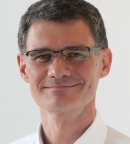
Difficulties aside, if you can’t measure it, you can’t manage or improve it.— Craig Earle, MD, MSc
Tweet this quote
At this year’s ASCO Quality Care Symposium, Craig Earle, MD, MSc, of the Ontario Institute for Cancer Research, used Donabedian’s Triad—structure, process, and outcome—to set the stage for his presentation on the science of quality. “The theory behind Donabedian’s Triad is that structure influences process, process influences outcome, and therefore structure influences outcome. So they’re all related, but we want to get to a point where we’re primarily measuring outcome, because that is what actually matters to patients,” explained Dr. Earle.
He defined “outcomes” as the end result of what happens to patients as a consequence of their encounters with the health system. “Categories of outcomes would measure morbidity, mortality, pain, functional status, patient satisfaction, and costs.”
Challenges Abound
Dr. Earle continued: “But there are challenges to using outcome measures for quality assessment. These studies can be biased due to patient selection, so it’s important to case-mix risk-adjust as much as possible. Moreover, these indicators take a long time to observe. For example, if you’re looking at prostate cancer, it might take 15 years to relate outcomes to upfront care. Difficulties aside, if you can’t measure it, you can’t manage or improve it.”
Dr. Earle used the results of two large studies that deciphered mountains of data in an effort to measure outcomes relating to quality care. Although he lauded the efforts, he noted the challenges involved in large-scale data mining when trying to reach a conclusive measurement.
He ended with a reductionist’s advice on measuring outcomes and quality by returning to Avedis Donabedian: “Systems awareness and systems design are important for health professionals, but they are not enough. They are enabling mechanisms only. It is the ethical dimensions of individuals that are essential to a system’s success. Ultimately, the secret of quality is love.”
The Community Setting

Dealing with the challenges inherent in a center like ours, we try to instill in our staff the glass-half-full approach. In the end, it’s all about delivering the best care to our patients.— Robert Siegel, MD
Tweet this quote
Robert Siegel, MD, of Bon Secours St. Francis Cancer Center, Greenville, South Carolina, looked at identifying high quality from the community setting. “At the symposium buffet, I saw a sign that said, ‘Bran Muffins: Contain gluten and are prepared in a nut environment.’ It’s a simple sign, inexpensive, and I doubt anyone did a randomized trial to gauge its worth. But as I realized, it was a metaphor for quality initiatives that many of us concoct in the community setting,” he said.
Dr. Siegel discussed the quality-care issues confronting a community cancer center. “Our small size is a challenge because although we can initiate quality measures, we don’t have the capacity or personnel to analyze our efforts. The absence of individuals trained in [quality-initiative] methodology should not be an impediment to launching quality initiatives in the community,” he explained.
Dr. Siegel continued: “We are an economic–safety net institution; nobody gets turned away. As a result, while many of our more well-off patients may choose to travel to an academic center, our patient population tends to be enriched for those who are medically disadvantaged and for whom there is an element of health-care illiteracy. Such patients both have the greatest need for, but also test the capacity of, quality initiatives in the community setting.”
Dr. Siegel then gave a quick sketch of the pertinent demographics in Greenville, South Carolina, where Bon Secours St. Francis Cancer Center is located. The city has a population of 62,250, but draws from a six-county catchment area of 1.25 million. Demographically, the surrounding community is 72.6% white, 18.2% African America, 9% Hispanic, and 2.2% Asian. About 12% of families and 16% of individuals live below the federal poverty level. Approximately 20% of adults smoke, 30% are obese, and 20% are uninsured. He pointed out that South Carolina did not expand Medicaid under the Affordable Care Act, adding an additional burden to an already economically challenged population.
“We have about 1,200 analytic cases per year. The focus of the [quality] initiatives at Bon Secours St. Francis have largely been geared toward optimizing the patient experience. As an example, we initiated one of the first adolescent and young adult programs in the community setting and have a 7-days-per-week, 12-hour-per-day infusion center in an effort to accommodate patients’ work and family schedules. We have meaningfully integrated palliative care services into our outpatient department.
Dr. Siegel spoke briefly about the ethos of the center, which is an important part of its quality care. “The Bon Secours cancer program has strong ethical foundations. It’s run by the sisters of Bon Secours, a Roman Catholic order of nurses, whose mission is to serve the needy of all races and socioeconomic origins. We are in a region in which religious adherence is perceived positively,” said Dr. Siegel.
“Dealing with the challenges inherent in a center like ours, we try to instill in our staff the glass-half-full approach,” concluded Dr. Siegel. “In the end, it’s all about delivering the best care to our patients, even if we do not have the capacity to formally measure the outcomes of interventions. Community cancer centers have unique obstacles and opportunities, and it’s important to embrace the mission and be faithful to it. Compassionate and effective care should be the foundational element. I tell my staff that we’re doing something special, and it’s important to always be open to change.” ■
Disclosure: Drs. Earle and Siegel reported no potential conflicts of interest.

